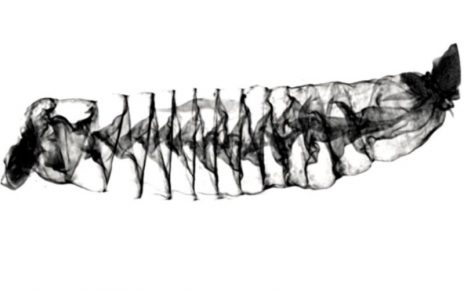
Enlarge / In this artist’s representation, Tetrapodophis amplectus glides through a tangle of branches from the conifer Duartenia araripensis that have fallen into the water, sharing this habitat with a water bug in the family Belostomatidae and small fish. (credit: Julius Csotonyi)
The discovery of a rare Cretaceous fossil that could have been a missing link in the evolution of modern snakes made headlines in 2015. It was dubbed Tetrapodophis amplectus (“four-footed serpent”) and proved controversial from the start, with some paleontologists questioning the interpretation that it was a protosnake. Now there is strong evidence that this latter view may be the correct one and that the specimen is more likely an early type of lizard, according to a a new paper published in the Journal of Systematic Paleontology.
Paleontologists have long suspected that snakes evolved from lizards at some point in the distant past, gradually losing their limbs. Thus, there should be an evolutionary predecessor with four limbs. This prediction was bolstered in 2006 with the discovery of a transitional snake-like fossil (Najash rionegrina) with two hind limbs dating back some 95 million years. There is also an ongoing debate about whether snakes originated in a marine or terrestrial environment, and the 2006 fossil supported the latter hypothesis.
Then, in 2015, the University of Portsmouth’s David Martill and co-author Nicholas Longrich of the University of Bath published a description of a four-legged fossil they claimed was the first known example of a four-legged protosnake with forelimbs and hindlimbs in the fossil record. Martill had stumbled across the fossil at the Museum Solnhofen in Germany, part of a larger exhibition of fossils from the Cretaceous Period.





